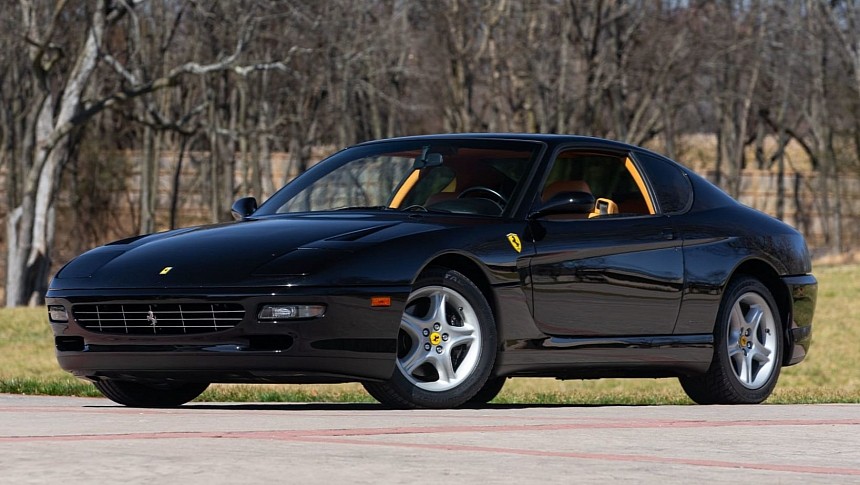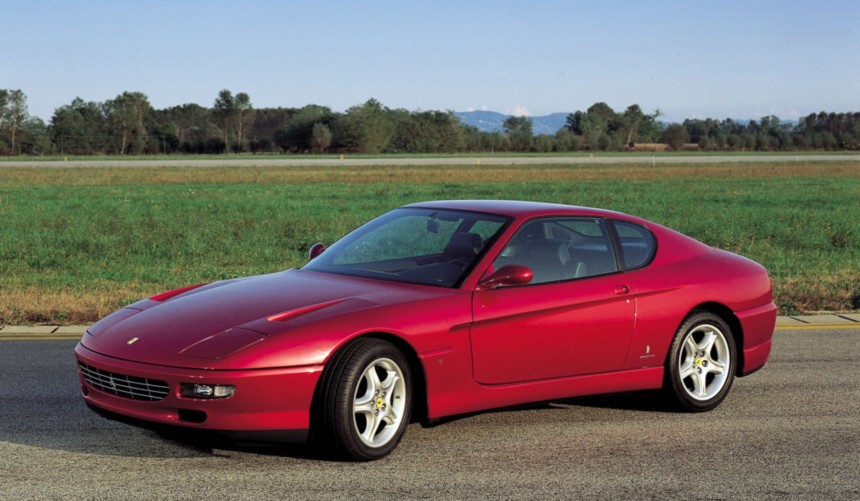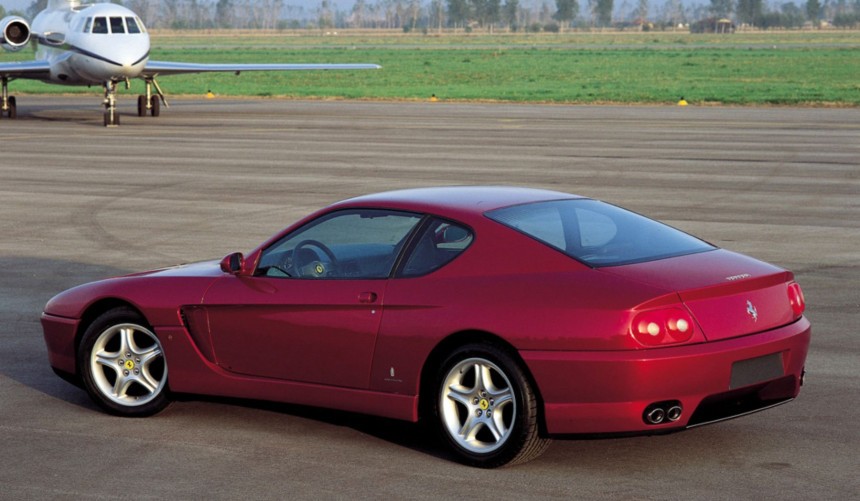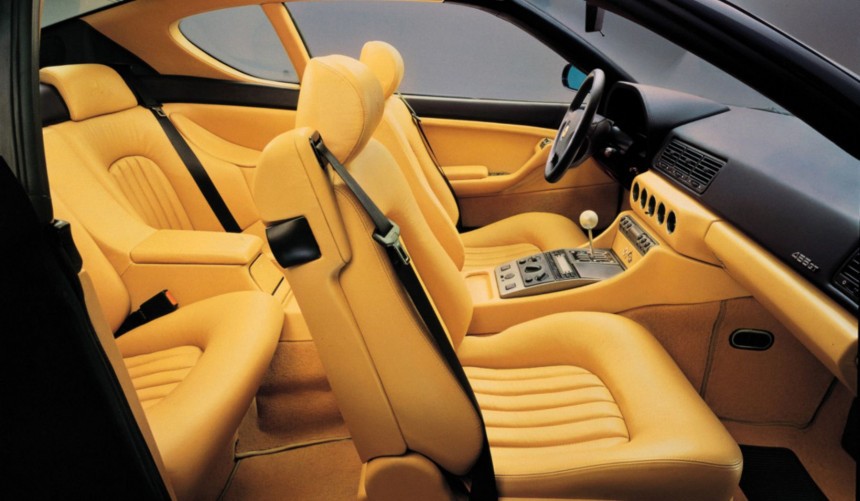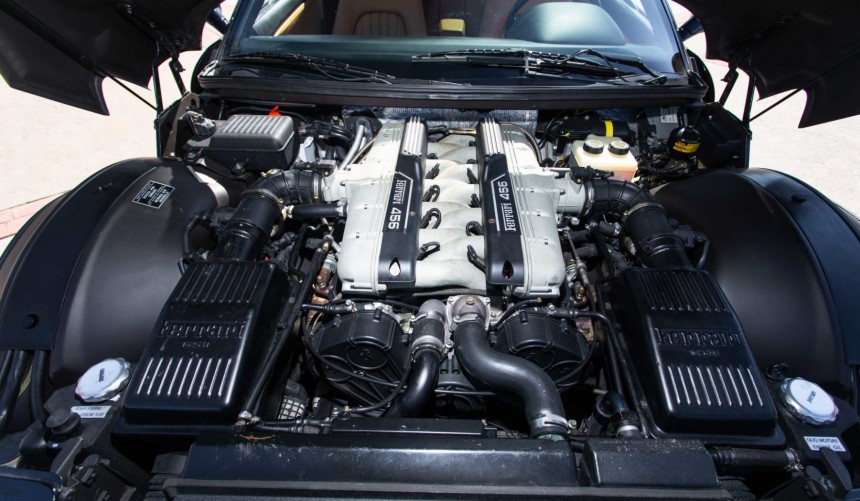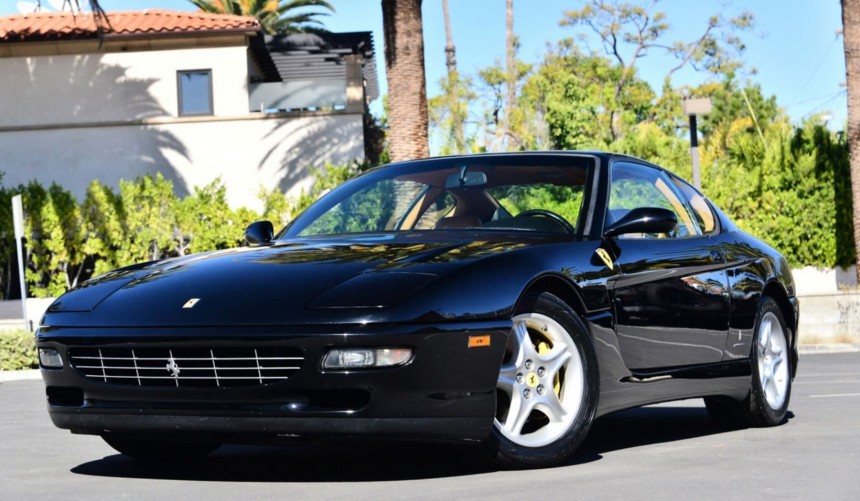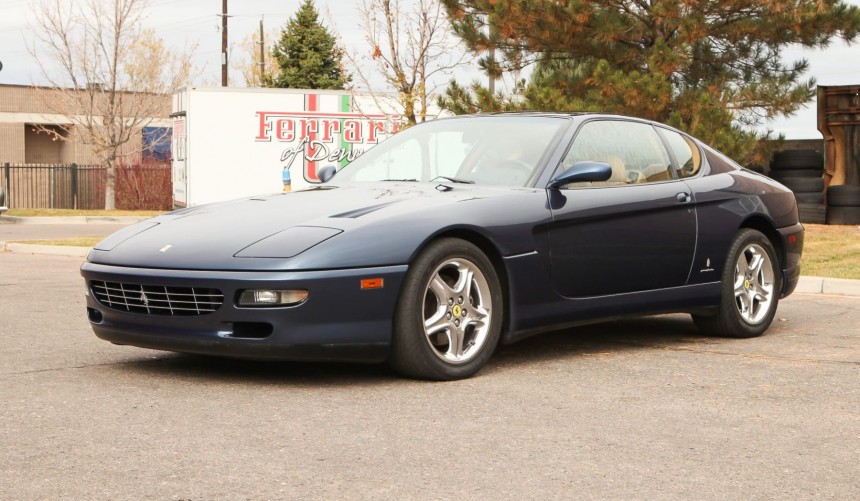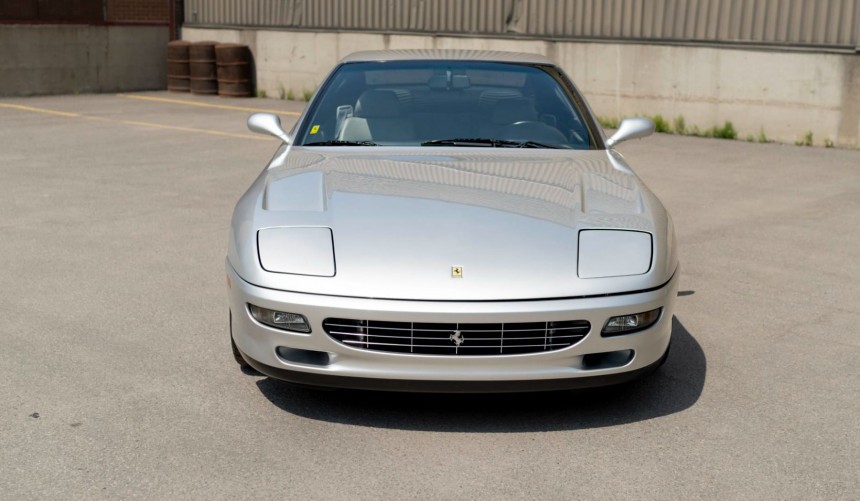Breathtakingly beautiful, surprisingly spacious, and, best of all, V12-powered, the 456 is one of the cheapest, most underappreciated modern classic Ferraris on the used car market, which makes it the perfect choice for anyone looking to buy an iconic luxury GT.
Since its early days as an Alfa Romeo factory racing team, Ferrari has prioritized its motorsport ventures. But, to progress and prosper as an independent carmaker, the brand founded by Enzo Ferrari after leaving Alfa started building road cars during the 1940s.
Today, mid-engine two-seaters like the 288 GTO, Testarossa, F40, 360 Modena, or the modern SF90 are almost synonymous with the notion of a Ferrari road car.
However, throughout its history, the Italian carmaker solidified its place at the top of the sports car food chain by producing a series of front-engine, four-seat grand tourers.
To some, these models are atypical Ferraris. Still, considering they've been around longer than mid-engine models and have contributed to the manufacturer's success story, GTs are actually the traditional Ferrari road cars.
Combining the thrilling driving experience and power of a high-performance sports car with the practicality of a conventional passenger car, a 2+2, V12-powered GT is the perfect choice for those who dream about owning a Ferrari but also want to drive it regularly and go on long-distance road trips with their family or friends.
During the 1970s and 1980s, Ferrari prioritized developing two-seat mid-engine sports cars rather than continuing to focus predominantly on GT road cars.
Nevertheless, the company's range continued to include a V12-powered 2+2 GT. The 1970s started with the 365 GTC/4 - essentially the four-seat version of the iconic 365 GTB/4 "Daytona."
But, unlike its two-seat sibling, the GTC/4 was an unsuccessful model that got the axe only two years after its debut, being replaced by the plebian-looking 365 GT4 2+2.
The GT4 2+2 morphed into the 400 series that became Ferrari's longest-running model line when it was finally discontinued in 1989.
Ferrari continued to focus on mid-engine cars, and for a while, the only four-seater available was the V8-powered Mondial.
Thankfully, in September 1992, the carmaker unveiled a completely new V12-powered GT that was better than its predecessor in every way conceivable.
Like the 348 introduced three years earlier, the 456 GT moved away from the aggressive wedge shapes that defined Ferrari's 1980s models in favor of curved, free-flowing lines.
Designed by Pininfarina's Pietro Camardella under Lorenzo Ramaciotti, the new GT looked nothing like its predecessor. Gone was the sedan-style rear, which was replaced by a semi-fastback roofline inspired by the shape of the iconic Daytona.
For many enthusiasts, the 456 was - and still is - too subdued, styling-wise. Compared to other Ferraris from the same era, the GT had a little too many curved lines and leaked the "cheese grater" side vents made famous by the Testarossa and 348.
Its subtle appearance that doesn't scream Ferrari is one of the reasons why the 456 is currently one of the most underrated Prancing Horses.
For years, I was among those not impressed by the 456's looks. But recently, I saw a 456 "in the flesh" and quickly changed my opinion.
The 456 is one of those cars that look much better in real life than in pictures or videos. Yes, it's subtle, but at the same time, imposing and oozes a sexy elegance from every single angle.
From 1992 to 1997, the 456's aluminum body didn't receive any styling upgrades. That changed in 1998 when the 456M (Modificata) was introduced. Though it received a new front grille with integrated fog lamps and other subtle changes, this facelifted version produced until 2003 was not a significant departure from the original design.
While Ferrari's mid-engine two-seaters from the 1970s and 1980s were known for their spartan cabins, the 400 series was praised for prioritizing luxury and comfort.
The interior design and quality were probably the series' only universally praised features, and its successor took it to the next level.
The 456's exterior may leave room for debate, but inside, there's nothing to complain about. It features plushy, Connolly leather-upholstered front seats plus two recessed ones in the back that deliver surprisingly ample legroom and comfort for a GT of this size.
While specific components like the rectangular air vents, the buttons for the power windows and mirrors, or the steering wheel remind you that you've just stepped inside a 1990s car, nothing looks botherlingly outdated.
Yes, the cabin is a few good levels behind current GTs. However, it still makes you feel like you're inside a high-quality luxury car that provides a high level of comfort and ergonomics, as well as all the essential amenities.
The cabin can differ depending on the model year. Earlier cars received a standard three-spoke steering wheel, while the rest were equipped with a bulkier four-spoke version with an integrated airbag.
Furthermore, the 456M received a slightly redesigned dashboard and new front seats that are even more comfortable.
When it was introduced, the most exciting feature of the 456 was its engine - the first all-new road car V12 developed by Ferrari since the long-running Colombo.
Codenamed Tipo F116, the modern all-aluminum unit displaced 5.5 liters and featured DOHC heads with four valves per cylinder.
Rated at 436 hp and 550 lb-ft (550 Nm) of torque, it was Ferrari's most powerful naturally-aspirated, street-legal engine at the time of its release, making the 456 GT the second most potent Ferrari model of 1992, behind the legendary F40.
Initially, the model was only available with a six-speed gated manual, but from 1995 onwards, a three-speed automatic was offered in a new yet identical version called 456 GTA.
Performance-wise, Ferrari stated that the nearly 4,000-pound (1,814 kg) GT could sprint to 62 mph (100 kph) in 4.8 seconds, run the quarter mile in 13.3 seconds, and reach a top speed of 192 mph (309 kph).
Throughout the years, the F116 has built a reputation for reliability. Since it wasn't pushed to its maximum potential in the 456, the V12 is virtually bombproof if properly maintained.
When compared to today's luxury grand tourers, neither the output nor the performance figures of the 456 stand out. That being said, the smooth-running V12's wild side that comes to life when flooring the gas makes the 456 feel anything but slow.
Besides the engine, which can be velvety and quiet at lower RPMs but also visceral when needed, driving the 456 is a thrilling experience on smooth highways or twisty roads covered with less-than-ideal pavement.
That's made possible by the fully independent suspension system with anti-roll bars at either end, a self-leveling rear system, and electronically adjustable shocks with three cockpit-selectable rigidity settings.
The steering is also highly responsive, thanks to the Servotronic system that electronically adjusts the level of assistance according to the suspension setting and speed.
In other words, the steering wheel will feel light when parking and becomes sensibly more rigid through a high-speed corner on a highway.
During a ten-year run, 3,289 units of the 456 were produced. Of those, 1,951 were first-series GTs and GTAs, while 1,338 were facelifted Modificatas.
Because it was never as popular as its sportier siblings developed during the 1990s, the 456's value hasn't increased too much in the last decades.
The initial series is currently one of the most affordable Ferrari models that money could buy, especially if you're willing to get one with an automatic.
According to classic.com, a low-mileage 1993-1998 456 GT in great shape has an average value of $70,000, while the much rarer GTA (403 units) built during the same period is generally 30% cheaper.
On the other side of the spectrum is the 1998-2003 456M GT, which has an average price of $107,000, according to the same source.
Even if it's now three decades old, the last Ferrari road car to feature pop-up headlights still looks reasonably modern, and if, like me, you weren't a fan of its style, I guarantee that you'll change your mind once you see one in real life.
Stepping inside the luxurious cockpit and driving it on an open road will most certainly make you fall in love with this unfairly underrated GT icon.
Beautiful, elegant, and practical, but also powerful and technologically sophisticated for its age, the 456 is the perfect 1990s gentleman's cruiser.
Though a manual GT is more desirable, the GTA, with its old-school automatic, is still an impressive car that makes buying a used Ferrari even more affordable.
Regardless of the version, the 456 is an amazing Ferrari. If you're a fan of the Italian brand who doesn't have a six-figure budget to own one, this is unquestionably the car for you and is currently worth every penny.
For a more detailed review of what it's like to drive a 456, we recommend the YouTube video below by TheCarGuys.TV.
Today, mid-engine two-seaters like the 288 GTO, Testarossa, F40, 360 Modena, or the modern SF90 are almost synonymous with the notion of a Ferrari road car.
However, throughout its history, the Italian carmaker solidified its place at the top of the sports car food chain by producing a series of front-engine, four-seat grand tourers.
To some, these models are atypical Ferraris. Still, considering they've been around longer than mid-engine models and have contributed to the manufacturer's success story, GTs are actually the traditional Ferrari road cars.
Combining the thrilling driving experience and power of a high-performance sports car with the practicality of a conventional passenger car, a 2+2, V12-powered GT is the perfect choice for those who dream about owning a Ferrari but also want to drive it regularly and go on long-distance road trips with their family or friends.
The first modern Ferrari GT
Nevertheless, the company's range continued to include a V12-powered 2+2 GT. The 1970s started with the 365 GTC/4 - essentially the four-seat version of the iconic 365 GTB/4 "Daytona."
But, unlike its two-seat sibling, the GTC/4 was an unsuccessful model that got the axe only two years after its debut, being replaced by the plebian-looking 365 GT4 2+2.
The GT4 2+2 morphed into the 400 series that became Ferrari's longest-running model line when it was finally discontinued in 1989.
Ferrari continued to focus on mid-engine cars, and for a while, the only four-seater available was the V8-powered Mondial.
Thankfully, in September 1992, the carmaker unveiled a completely new V12-powered GT that was better than its predecessor in every way conceivable.
Subtle yet oozing a sexy elegance
Designed by Pininfarina's Pietro Camardella under Lorenzo Ramaciotti, the new GT looked nothing like its predecessor. Gone was the sedan-style rear, which was replaced by a semi-fastback roofline inspired by the shape of the iconic Daytona.
For many enthusiasts, the 456 was - and still is - too subdued, styling-wise. Compared to other Ferraris from the same era, the GT had a little too many curved lines and leaked the "cheese grater" side vents made famous by the Testarossa and 348.
Its subtle appearance that doesn't scream Ferrari is one of the reasons why the 456 is currently one of the most underrated Prancing Horses.
For years, I was among those not impressed by the 456's looks. But recently, I saw a 456 "in the flesh" and quickly changed my opinion.
The 456 is one of those cars that look much better in real life than in pictures or videos. Yes, it's subtle, but at the same time, imposing and oozes a sexy elegance from every single angle.
From 1992 to 1997, the 456's aluminum body didn't receive any styling upgrades. That changed in 1998 when the 456M (Modificata) was introduced. Though it received a new front grille with integrated fog lamps and other subtle changes, this facelifted version produced until 2003 was not a significant departure from the original design.
A luxurious and ultra-comfortable cabin
The interior design and quality were probably the series' only universally praised features, and its successor took it to the next level.
The 456's exterior may leave room for debate, but inside, there's nothing to complain about. It features plushy, Connolly leather-upholstered front seats plus two recessed ones in the back that deliver surprisingly ample legroom and comfort for a GT of this size.
While specific components like the rectangular air vents, the buttons for the power windows and mirrors, or the steering wheel remind you that you've just stepped inside a 1990s car, nothing looks botherlingly outdated.
Yes, the cabin is a few good levels behind current GTs. However, it still makes you feel like you're inside a high-quality luxury car that provides a high level of comfort and ergonomics, as well as all the essential amenities.
The cabin can differ depending on the model year. Earlier cars received a standard three-spoke steering wheel, while the rest were equipped with a bulkier four-spoke version with an integrated airbag.
Furthermore, the 456M received a slightly redesigned dashboard and new front seats that are even more comfortable.
Powered by a smooth V12 that still packs a punch
Codenamed Tipo F116, the modern all-aluminum unit displaced 5.5 liters and featured DOHC heads with four valves per cylinder.
Rated at 436 hp and 550 lb-ft (550 Nm) of torque, it was Ferrari's most powerful naturally-aspirated, street-legal engine at the time of its release, making the 456 GT the second most potent Ferrari model of 1992, behind the legendary F40.
Initially, the model was only available with a six-speed gated manual, but from 1995 onwards, a three-speed automatic was offered in a new yet identical version called 456 GTA.
Performance-wise, Ferrari stated that the nearly 4,000-pound (1,814 kg) GT could sprint to 62 mph (100 kph) in 4.8 seconds, run the quarter mile in 13.3 seconds, and reach a top speed of 192 mph (309 kph).
Throughout the years, the F116 has built a reputation for reliability. Since it wasn't pushed to its maximum potential in the 456, the V12 is virtually bombproof if properly maintained.
Capable of delivering a driving experience fit for a GT icon
Besides the engine, which can be velvety and quiet at lower RPMs but also visceral when needed, driving the 456 is a thrilling experience on smooth highways or twisty roads covered with less-than-ideal pavement.
That's made possible by the fully independent suspension system with anti-roll bars at either end, a self-leveling rear system, and electronically adjustable shocks with three cockpit-selectable rigidity settings.
The steering is also highly responsive, thanks to the Servotronic system that electronically adjusts the level of assistance according to the suspension setting and speed.
In other words, the steering wheel will feel light when parking and becomes sensibly more rigid through a high-speed corner on a highway.
A surprisingly affordable Ferrari
Because it was never as popular as its sportier siblings developed during the 1990s, the 456's value hasn't increased too much in the last decades.
The initial series is currently one of the most affordable Ferrari models that money could buy, especially if you're willing to get one with an automatic.
According to classic.com, a low-mileage 1993-1998 456 GT in great shape has an average value of $70,000, while the much rarer GTA (403 units) built during the same period is generally 30% cheaper.
On the other side of the spectrum is the 1998-2003 456M GT, which has an average price of $107,000, according to the same source.
Worth every penny
Stepping inside the luxurious cockpit and driving it on an open road will most certainly make you fall in love with this unfairly underrated GT icon.
Beautiful, elegant, and practical, but also powerful and technologically sophisticated for its age, the 456 is the perfect 1990s gentleman's cruiser.
Though a manual GT is more desirable, the GTA, with its old-school automatic, is still an impressive car that makes buying a used Ferrari even more affordable.
Regardless of the version, the 456 is an amazing Ferrari. If you're a fan of the Italian brand who doesn't have a six-figure budget to own one, this is unquestionably the car for you and is currently worth every penny.
For a more detailed review of what it's like to drive a 456, we recommend the YouTube video below by TheCarGuys.TV.
